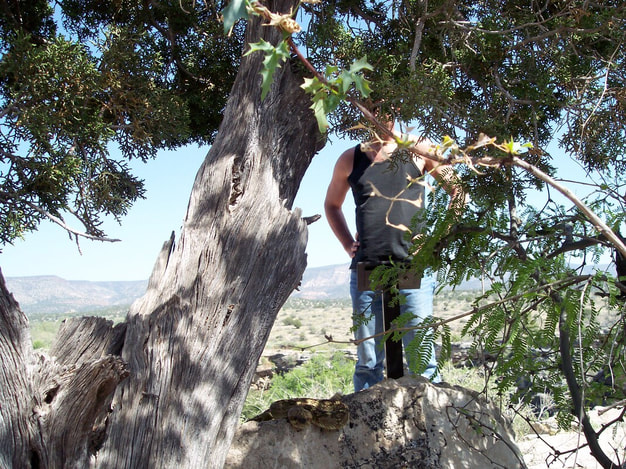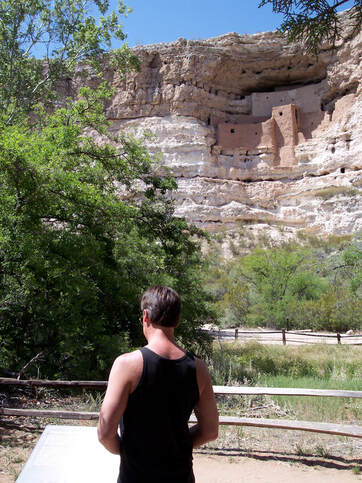|
It's a mystery, really. Standing amidst thousand-year-old stone dwellings that archeologists say were suddenly abandoned in the early 1400s, you can't help wondering what happened. If you’re heading towards Arizona’s sunnier, drier climate this winter, visit the Verde Valley 50 miles south of Flagstaff and formulate your own theory. Scientists estimated that the dwellings were used for only about three centuries before the area was suddenly deserted. Were the ancient residents driven out? Did they die of disease? Deplete their natural resources? Or perhaps they didn't really disappear, just simply migrated somewhere else? Who would do that and why? “Who” is easier to answer. The ruins at Montezuma Castle, Montezuma Well, and Tuzigoot National Monuments were once the home of the prehistoric Southern Sinaguans, which is Spanish for "without water." Located in Arizona's Verde Valley, these three National Monuments represent some of the best-preserved cliff dwellings and hilltop pueblos in the Southwest.
 Montezuma Well Montezuma Well is a separate location, but still part of the Montezuma Castle National Monument. As of June 2020, the Well area is closed due to the COVID-19 pandemic, but keep this area in mind once it’s back open to the public again. This natural limestone sinkhole is 55 feet deep and 368 feet across, and was formed thousands of years ago when a huge underground cavern collapsed. More than one and a half million gallons of water a day flow into it from two underground springs. The pretty blue pool is rimmed with unreachable cliff dwellings, but a platform overlooking the site provides a nice aerial view. For a closer look at 800-year old cave ruins, follow the path down to the water's edge. In addition to building homes into the cliffs, the Southern Sinaguans also took advantage of natural caves in the area and built some dwellings at ground level, too. The trail also passes more stone ruins that were once the walls of free-standing pueblos. RATTLESNAKE WARNING! Snakes are frequently found in this area so protect yourself by wearing Snake Gaiters or snake proof boots. Tuzigoot National Monument The stone ruins here are very different from the cliff dwellings found at Montezuma Castle and Well. Tuzigoot is the remains of a 110-room pueblo that sits on a long limestone ridge 150 feet above the Verde River floodplain. And what's especially nice for history buffs is that you can get up close and personal with the dwelling and may even walk inside some of the rooms. Tuzigoot is an Apache word that means "crooked water" and also aptly describes the zigzag appearance of what's left of the structure's walls. Although the stones are original, the park service has reinforced the crumbling mortar with cement. To see the entire pueblo, climb the circular trail that winds up the hill. At the top, you'll be treated to a panoramic view across the wide Verde Valley. Thanks to physical evidence left behind by the Sinaguans, archeologists have concluded quite a bit about their prehistoric culture and lifestyle. But since no separate Sinaguan tribe exists today, their exact fate will never be known. Conceive your own conclusions by visiting these fragile and irreplaceable ruins. NOTE: The National Park Service (NPS) is closely monitoring and responding to the COVID-19 pandemic. Following guidance from the White House, Centers for Disease Control and Prevention (CDC), and state and local officials, NPS continues to adapt to changing conditions while maintaining public access at a majority of NPS sites. Social distancing and recommendations to wear a face covering may continue to be in effect. Always check the NPS website for closure information before visiting. Enjoy this out of the way National Treasure!Comments are closed.
|
RAZER GAITERS

 RSS Feed
RSS Feed
